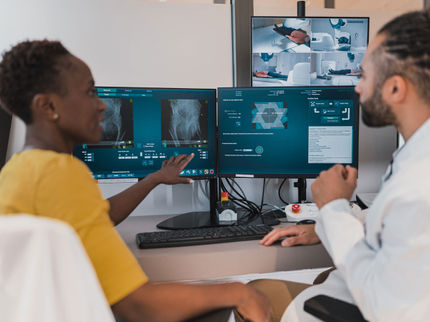AEterna Zentaris to Further Develop Three Follow-up Multi-targeted Cytotoxic Candidates to AEZS-112
AEterna Zentaris Inc. presented an abstract outlining novel data generated from three AEZS-112 (formerly ZEN-012) follow-up multi-targeted cytotoxic candidates at the AACR-NCI-EORTC International Conference on Molecular Targets and Cancer Therapeutics. Following encouraging results, the Company will pursue further research aimed at selecting an AEZS-112 follow-up candidate for preclinical development in cancer.
David J. Mazzo, Ph.D., President and Chief Executive Officer at AEterna Zentaris commented, "These encouraging new results for our AEZS-112 follow-up compounds are further proof of the quality and depth of our internal drug discovery engine, and we look forward to the continued development of these compounds as potential novel oral cancer treatments."
The abstract entitled, "Highly Potent Cytotoxic Compounds with Inhibitory Effects on Tubulin Polymerization and Topoisomerase II", reviewed results of a pharmacological characterization of three follow-up compound candidates to AEZS-112, AEterna Zentaris' multi-targeted cytotoxic compound currently in a Phase 1 clinical trial for solid tumors and lymphoma. The analysis was aimed at identifying compounds with either quantitative or qualitative variations in either mode of action - inhibition of tubulin polymerization, topoisomerase activity as well as antiangiogenic properties - and/or tumor specificity for subsequent preclinical development.
AEZS-112 follow-up candidates were subjected to comprehensive in vitro profiling with respect to mode of action, metabolic stability and interference with clonogenic growth of human xenograft derived cell lines.
AEZS-112 is a novel oral multi-targeted cytotoxic compound with inhibitory effects on tubulin polymerization, topoisomerase II and angiogenesis. In January 2007, the Company initiated a Phase 1 clinical trial for solid tumors and lymphoma; primary endpoints will focus on determining the safety and tolerability of the compound.
Topics
Organizations
Other news from the department research and development

Get the life science industry in your inbox
By submitting this form you agree that LUMITOS AG will send you the newsletter(s) selected above by email. Your data will not be passed on to third parties. Your data will be stored and processed in accordance with our data protection regulations. LUMITOS may contact you by email for the purpose of advertising or market and opinion surveys. You can revoke your consent at any time without giving reasons to LUMITOS AG, Ernst-Augustin-Str. 2, 12489 Berlin, Germany or by e-mail at revoke@lumitos.com with effect for the future. In addition, each email contains a link to unsubscribe from the corresponding newsletter.






















































